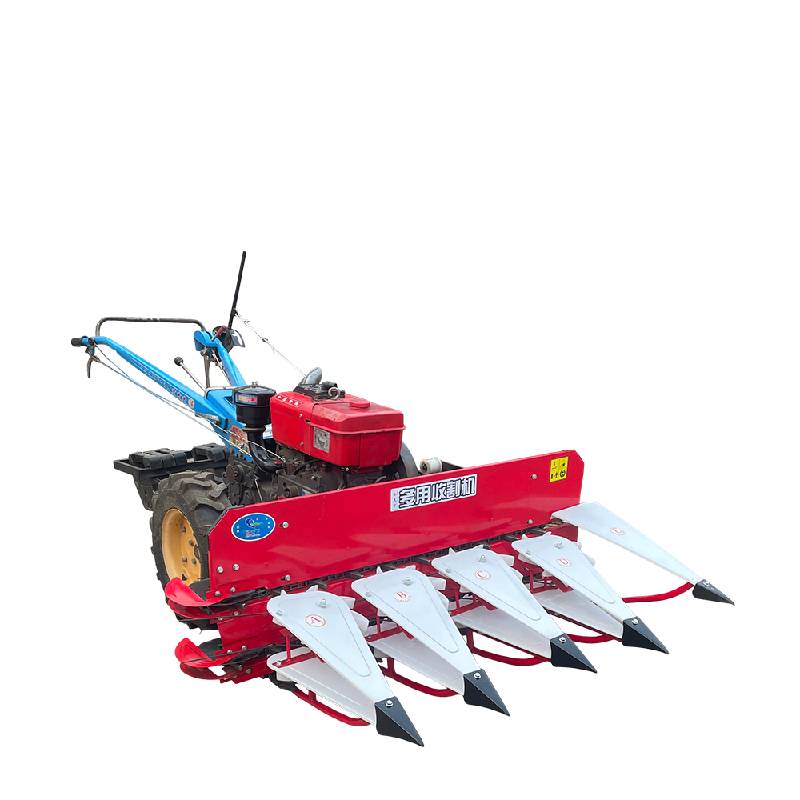Reaper Binder: Fast Cutting, Clean Binding, Durable
Field Notes on the Walking Tractor Mounted Reaper Head (GS120C2)
If you’ve been watching small-farm mechanization, you’ve probably heard the term reaper binder tossed around at co-ops and field days. The GS120C2 walking-tractor cutting head coming out of Julu Industrial Park, Xingtai City, Hebei Province, China, is one of those practical tools that, frankly, does more than the brochure admits—especially on small rice and wheat plots where lodging is common and labor is tight.

What’s driving adoption right now
Three things: labor scarcity during peak harvest, rising custom-hire rates, and the need to cut and bundle cleanly for sun-drying or small stationary threshers. Many customers say the GS120C2 pairs nicely with 8–12 hp walking tractors, which makes it accessible. And yes, it’s compact enough to pivot on terrace corners without the usual cursing.
Product snapshot and specs (real-world may vary)
| Parameter | GS120C2 Walking Tractor Mounted Reaper Head |
|---|---|
| Cutting width | ≈ 1200 mm |
| Row capability | 2–4 rows (rice/wheat), crop-dependent |
| Compatible power | Walking tractors ≈ 8–15 hp |
| Cutting height | ≈ 50–120 mm adjustable |
| Drive | Belt/chain transmission to reciprocating knife |
| Mass | ≈ 110–140 kg (variant-specific) |
| Intended crops | Paddy, wheat, barley, oats, light millet |
How it’s built and tested
Materials: high-carbon knife sections, heat-treated guard fingers, ball-bearing reel hubs, and wear-resistant belts. Methods: CNC-stamped blades, hardness-controlled heat treatment, dynamic balancing on the reel. Testing standards reference ISO 11684 for safety labeling, ISO 3767 for symbols, and common GB/T agricultural machinery benchmarks. Service life? Typically 3–5 seasons under normal maintenance—more if you’re careful with stones and keep belts tensioned.
Sample test data (customer fields, around 18% grain moisture): wheat harvest loss ≈ 1.5–2.2%; rice lodging recovery improved by ≈ 12–18% versus sickle-only cutting. Your mileage will vary with crop density and operator skill, of course.
Where it shines
- Small plots, terraces, and narrow bunds
- Windrow-and-bundle workflows ahead of sun-drying or mini threshers
- Wet paddies where a compact header reduces soil rutting
Mini case: a 6-hectare cooperative in the Mekong delta swapped three labor crews for one operator plus a walker—turnaround time dropped from five days to two, with tidier bundles and less shatter loss. Not perfect (mud ate a belt once), but a net win.
Vendor landscape (quick take)
| Vendor | Strengths | Watch-outs | Indicative Price (≈) |
|---|---|---|---|
| Niuboshi (Hebei) | Solid parts availability; practical design; good dealer network in N. China/SEA | Spec options vary by batch—confirm interface kit | Mid-range |
| Domestic Brand A | Very aggressive pricing; simple maintenance | Coating and belt quality can be hit-or-miss | Low |
| Import Brand B | Premium fit/finish; excellent manuals | High parts cost; longer lead times | High |
Customization and compliance
Options include crop lifters, reinforced guards for stony soils, custom row dividers, and angled skid shoes for wet fields. Branding/paint and interface kits for different walker PTOs are commonly provided. Certifications typically include CE self-declaration with risk assessment aligned to ISO 12100; safety decals per ISO 11684. Ask for conformity docs, serial traceability, and a spares list.
What users say
“Starts early in dew without clogging,” one operator told me; another said fuel savings were modest but real because forward speed stayed consistent. The recurring tip: keep the knife sections sharp and reel timing just a hair ahead of the sickle—this alone makes a reaper binder feel twice as capable.
Final takeaway
If you’re bridging the gap between hand harvest and full combines, a compact reaper binder like the GS120C2 is, to be honest, a sensible middle path—affordable, serviceable, and good enough to tame lodged rice without drama.
Authoritative citations
- ISO 11684: Tractors, machinery for agriculture and forestry—Safety signs and hazard pictorials. https://www.iso.org/standard/19523.html
- ISO 3767: Tractors, machinery for agriculture and forestry—Symbols. https://www.iso.org/standard/73992.html
- FAO: Farm mechanization for smallholders—Guidelines and case studies. https://www.fao.org/
- OECD Tractor Codes—Performance and safety testing frameworks. https://www.oecd.org/agriculture/tractor-codes/
Latest news
-
Small Harvester – Affordable, Efficient Machines Transforming Farming & ForestryNewsNov.18,2025
-
Small Wheat Harvester – Efficient Mechanization for Smallholder Farms WorldwideNewsNov.17,2025
-
Efficient Small Corn Harvester Solutions for Smallholder Farms | Boost Your HarvestNewsNov.15,2025
-
Compact and Efficient Mini Combine Harvesters for Small FarmsNewsNov.15,2025
-
Small Combine Machinery: Compact Solutions for Efficient HarvestingNewsNov.14,2025
-
Mini Combine Harvester: Compact Efficiency for Modern FarmingNewsNov.14,2025








